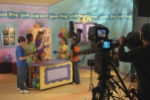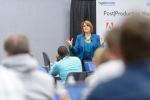Just about every week, a client asks me if we can use a famous person’s video clip or voice in one of their productions. The much talked-about “Come Back to the Sea” Carnival Cruise lines Superbowl Spot brings up yet again this topic much discussed among creative media-makers: what rights are involved, even for public domain archival materials?
So-called “rights of publicity” are often something to consider when you are using a person’s image or voice to endorse a product or brand. In an interview with PR Newswire, the Carnival spot’s Director Wally Pfister (Dark Knight, Inception) seemed to be saying that an implicit product sale wasn’t the point of the ad (“we aren’t just asking consumers to purchase a product or widget, but instead, we are hoping to move them to feel a certain way about cruising.”) While the JFK’s “we are tied to the ocean” 1962 speech made to the Ambassador of Australia and delegation might be considered public domain because he made it while serving in public office, the audio could be considered to fall under rights of publicity when it comes to promoting a cruise line. (Disclaimer: I’m not an attorney. I don’t play one on TV. And I have no personal knowledge of whether or not BBDO requested these rights from the Kennedy estate.)
As creative content producers–whether commercial ventures or nonprofit enterprises–we should always be wary about this issue of the rights of people to their own voices and images, even when they are deceased. A few relevant cases come to mind. Ford Motor Company used a “sound-alike” voice in a commercial and Bette Midler sued. The appellate court ruled in favor of Midler, saying that her voice was protected against unauthorized use. The ad agency who came up with the creative (Young & Rubicum) was also named in the suit. A similar situation occurred with the estate of Erol Flynn when a photo of him was used in car ad.
Well, these are famous Hollywood stars you might say. JFK was a public servant. True enough. But the family of Richard Nixon raised a big fuss with Disney over Oliver Stone’s movie “Nixon”. On the other side of the ledger, the makers of “Selma” completely avoided using the actual words of Martin Luther King in his famous speeches, presumably because of the highly litigious reputation of the King family when it comes to MLK rights of publicity. That’s really too bad, as a generation of film-goers might never read or hear the real speeches.
So it’s a dilemma, and one you can’t always determine with full clarity in advance. As media makers, we always need to be mindful about archival clips, why we choose them, and how to use them properly. That often means running creative ideas by attorneys (as if EP and client reviews aren’t enough!). Defending our creative choices in the courts isn’t really what we have in mind when we’re designing storyboards, so it does need to play into our thinking.
Amy DeLouise is not an attorney nor does she play one on TV. She is a creative producer and director, and speaks and writes about the issues faced by other creative types trying to earn a living making interesting content.
F













